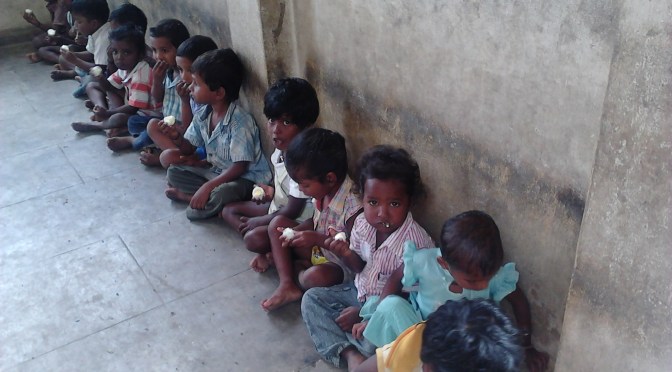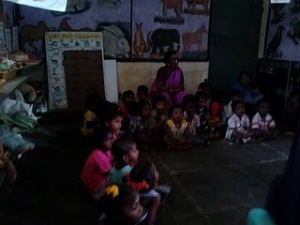We travelled to a place called Chittalapakkam today, where we discussed nutrition first with very small children and then with their mothers. We met in a balwadi or creche. We discussed the importance of fruits and vegetables, drinking milk, and washing hands. After this, we went to someone’s home, which was really a hut, and made high-nutritionrotis (indian flatbread) out of wheat flour and gram flour, carrots, spinach, and other vegetables. They were made with minimal oil and and not fried. We took these back to the balwadi, distributed them to the children, and discussed them with the mothers.
Tag Archives: community medicine
back in business
It’s been difficult to keep updates going when I haven’t had much to say, much to talk about. But I saw – and treated – my first cases today.
Medicine? For the community? Say what?
How important is it for us to really learn community medicine? Most Indian medical students consider community medicine to be the biggest waste of their time. Bigger, even, than sitting in the canteen discussing the latest movie or the new gossip about the surgery profs.
Today, for a community medicine class on polio, for which India is one of only 6 endemic areas, 29 people showed up. There are supposed to be 144 people in the class. I mean granted, major exams coming up, but still…29? The tragic thing is that even the professors subscribe to the myth that CM is only for the sake of passing the final exam which is mandated by the Medical Council of India. Today’s class was peppered with the phrases “this is important for your exam” and “this will definitely be an important question for you”, instead of “this will come in handy. Most subjects are taught that way, unfortunately, but at least with other subjects the students tend to realize that they need to know their stuff. Here, no one even dares to think that CM might actually come in handy; that we might someday need to know what the different strategies for polio eradication are.
In a country like India, where 70% of the population and only 20% of doctors are in the rural areas, it can’t be stressed enough how important it is for the average student doctor John Doe (or Karthik Subramaniam, as the case may be,) to be thoroughly well versed with the principles of public health and community medicine. So what is it going to take to bring about a change in the student population?
I don’t think the problem is one restricted to my university or even to India as a whole. The factors which manage to turn medical students away from community health and public health reform vary from place to place, population to population. Let’s take the latest controversy surrounding Indian medical education, for example.
There is talk that there is going to be a new requirement that all Indian medical students should serve two years in a rural health center after graduating, before actually receiving their degrees. This rumor was enough to cause strikes and riots all over India. Government university students proclaimed that as they come from middle class families, it is unfair to ask them to give up 2 years of solid earning potential for the sake of villagers who dont’ really need real doctors. Private university students retort that since government students pay so much less in tuition fees, they can afford to give up two years where private students cannot. Nowhere in the discussion, neither in the student dialogue nor in the media, was there a consideration given to India’s need for health care for its rural and destitute sick. It appears to be a complete nonissue for people.
There is an increasing shift of perception from healthcare as a public service to health care as a consumer product, a commodity to be evaluated with respect to economic advantage and supply-demand analysis. Of course it’s easy to put a moral spin on the whole issue and to say that we owe it to our poverty-stricken brethren and whatnot (which, for the record, is precisely what i believe). And perhaps that works in a semisocialist society like India. But how does that translate to a thoroughly capitalist system like the United States? Is it wrong to tell doctors that they shouldn’t be allowed to sell their services to the highest bidder like those who bear other skills? What is it that makes medicine different?
food for thought… I’ll be sure to bring this up again soon, perhaps with fewer questions and a few more answers from my side. Ciao for now.



